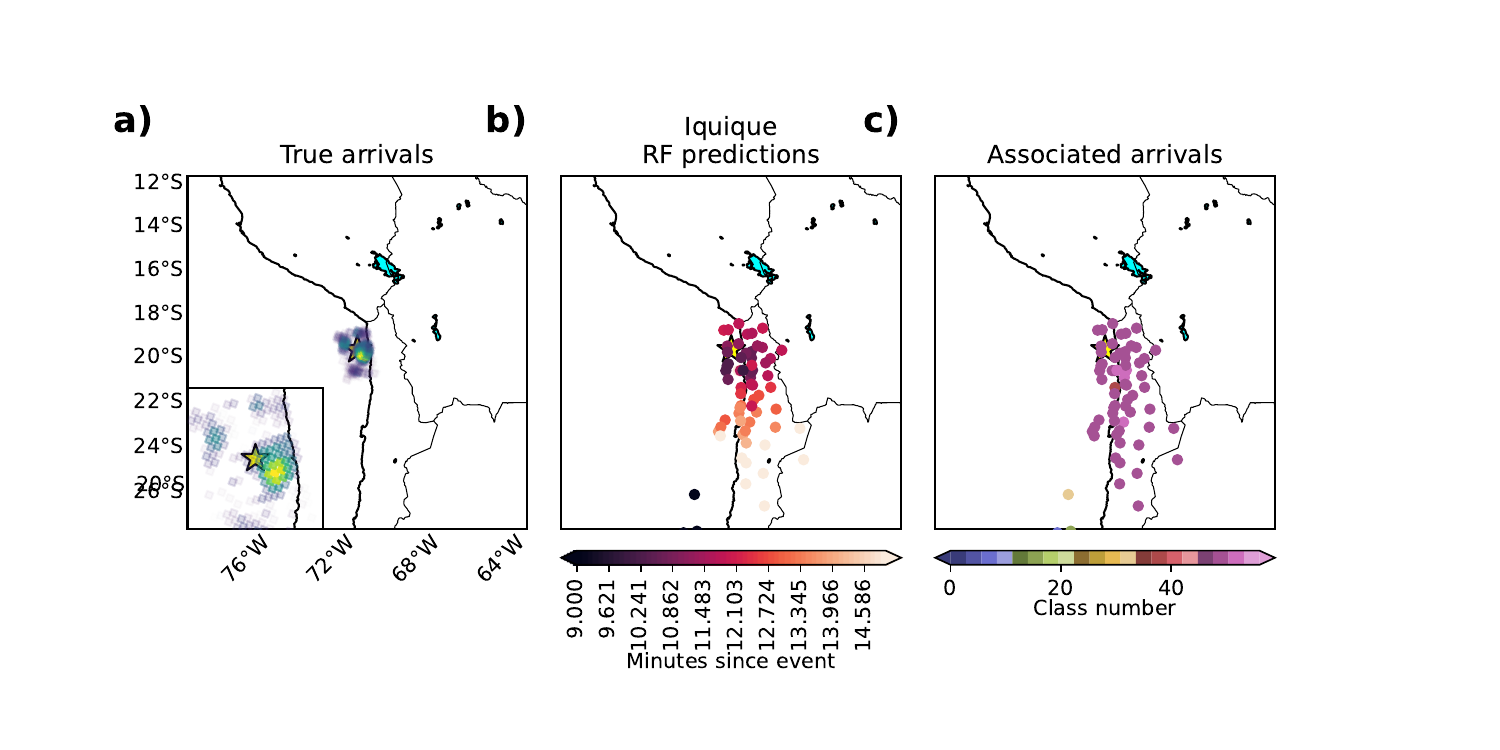References:
[1] Q. Brissaud, and E. Astafyeva. Near-real-time detection of co-seismic ionospheric disturbances using machine learning. Geophysical Journal International (in review, 2021).
https://doi.org/10.1002/essoar.10507674.1
[2] E. Astafyeva, et al. First ionospheric images of the seismic fault slip on the example of the Tohoku-oki earthquake. Geophysical Research Letters 38.22 (2011).
https://doi.org/10.1029/2011GL049623
Undersea earthquakes can cause large displacements of the ocean floor. Such displacements affect the ocean surface level and can generate tsunamis with tragic consequences for coastal communities. In order to prevent such disasters, efficient near-real-time tsunami monitoring techniques are essential. Fortunately, in addition to tsunamis, large earthquake excite strong inaudible sound waves, called infrasound, which can propagate up to the ionosphere, an electrically charged atmospheric layer between 150-250 km altitude. Since the acoustic waves excited by earthquakes can be detected within 15min of a seismic event, their ionospheric measurement enables us to characterize an earthquake’s tsunami potential in Near-Real-Time (NRT). However, the detection of such waves is time consuming as it relies on human experts. To automatize this procedure, we propose the first machine-learning model to detect and classify earthquake signals in the ionosphere in NRT. This model paves the way for future NRT assessment of the tsunamigenic potential of earthquakes from the ionosphere.

The maps above show the ionospheric arrival-time maps, automatically constructed by our RF model, 16 minutes after the Iquique earthquake: (a) map showing the epicenter location (yellow star), and the maximum fault slip as green to yellow patches, (b) RF-based arrival-time predictions, and (c) association classes determined from the RF-predicted time. Our method automatically detect and associate arrivals belonging to the same wavefront. As demonstrated in [2], such maps allow to reconstruct earthquake-induced surface displacements and measure its tsunamigenic potential. The overall detection code takes less than 0.6 s while the association procedure, that can be run in parallel, takes less than 5 s. We can therefore implement our method in NRT for early-warning applications.
